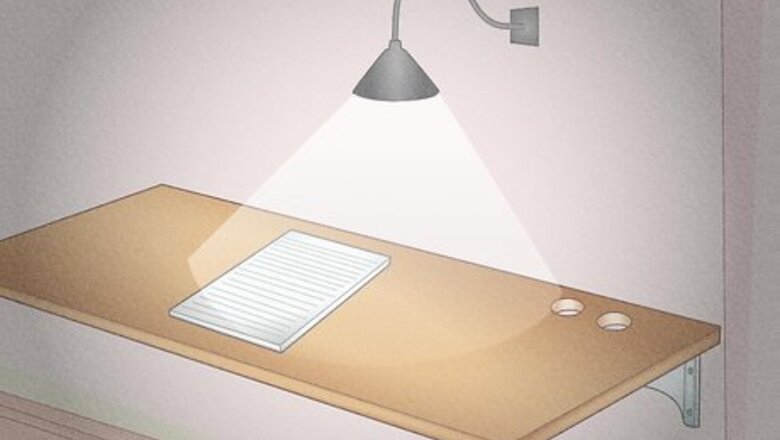
views
Reading light
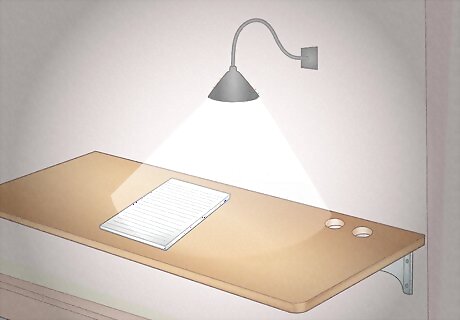
If you have smaller light sources, start collecting them now. Reading lights are low-energy and helpful in an emergency situation. If you only need a little bit of light, preserve your flashlight’s batteries and use your smaller light source. If you have one of those keychain lights or penlights, you can use those as well. There may be other smaller sources of light around your home. Handheld video game devices and old cell phones may be able to provide a few hours of light.
Candles
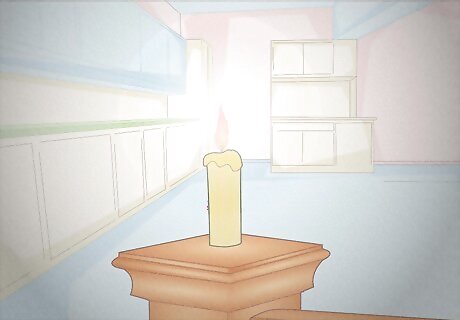
This is not the safest option, but candles will provide light. If you light any candles, do not leave them unattended. Keep them out of reach of children and pets, and use a proper candle holder to keep them steady. You can use any kind of candle you have on hand to get a few hours of light. Always extinguish candles before going to bed or leaving the room where the candle is. If things are hectic and you’ve got a whole household of family members running around trying to make emergency preparations, it’s not a good time to light a candle.
Crayons
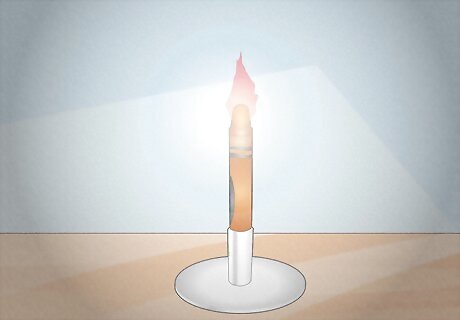
Crayons are flammable, so they’re a cheap way to create some light. Wax-based crayons are basically identical to candles, and you likely have a few laying around. Take a crayon and set it safely in a candle holder with tall sides. Use a lighter or match to ignite the top of the crayon and use that as a candle. Just be careful and don’t leave the crayon out of sight while you’re using it for light. Keep the paper on the crayon. It’ll help it keep its shape and prevent it from burning out too quickly. If you can’t get the candle to light, break the tip off so that the paper at the top is exposed and light that.
Olive oil, twine, and wire.
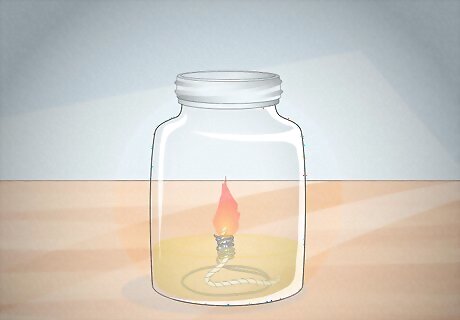
You can create a makeshift lantern with a few household items. Grab a mason jar. Unwind a metal hanger, or pull out some stiff metal wire. Wrap the wire into a 2–4 in (5.1–10.2 cm) tall coil that will fit inside of the jar. Clip off a length of twine and wrap it around the metal. Fill the bottom 1 in (2.5 cm) of the jar with olive oil and set the coil inside. Light the tip of the twine and you should have a consistent source of light for a few hours! Make sure there’s roughly ⁄4 in (0.64 cm) of twine sticking out past the top of the metal before you light it. You need a little bit of extra fabric at the beginning to keep the flame from getting out of hand. This is not the safest option available, and you should only do this if you have no other options. Do not leave your makeshift lamp out of your eyesight while you’re using it, and extinguish the flame when you’re done. This should work with basically any cooking oil. If you have any sardines lying around, there’s probably olive oil in there.
Bacon grease and wick
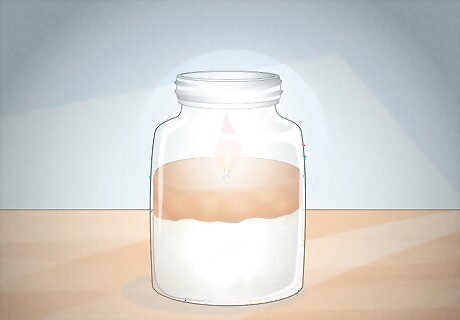
You’ll also need a toothpick to turn the bacon grease into a candle. This will only work if you’re storing bacon grease in a flame-resistant container, such as a mason jar. Use the toothpick to poke a vertical hole in the middle of the grease and push a loose wick inside. If you don’t have a wick, you can cut a thin strip of fabric off of a cotton rag or shirt and use that. Then, light the wick or fabric with a lighter or match. The bacon fat will melt and the oil it produces will keep the flame going. To reiterate, this is not going to be the safest option available, and you should only do this if you don’t have any other options available. You can do the same thing with Crisco if you have a container you don’t need.
Glowsticks

If you have glowsticks packed away somewhere, crack them for light. You may have some leftover glowsticks from a Halloween party or tucked away in an emergency kit. These are typically good for a few hours of light, and they’re extremely safe to use. If you’re stocking up for a power outage in the future, there are military-grade light sticks you can buy that will provide much more light than a traditional glowstick. If there’s been a large power outage and your local stores are all out of flashlights, try swinging by a party supply or big box store and picking up some glowsticks. It’s unlikely anyone else will have gotten to them. You may have some glowsticks in the trunk of your vehicle if you drive and you have an emergency kit. Don’t light any road flares inside, though.
Flashlights
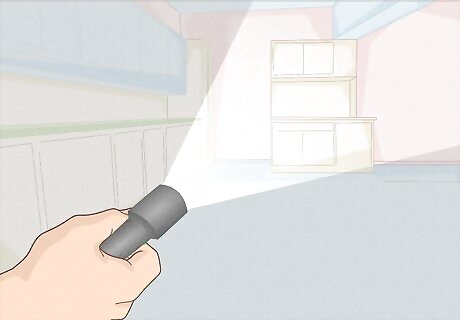
This is the safest and easiest way to produce cheap light. If any of your flashlights don’t turn on, try replacing the batteries. This should give you access to a consistent light supply for the immediate future while you work on making other preparations to stay warm or save food. If you’re buying a flashlight to prepare for a power outage, buy at least one hand-cranked flashlight that doesn’t require batteries. That way, you’ll always have a light source if you run out of batteries. You probably don’t want to jump right to the flashlight on your phone. You may need the battery to place emergency calls in the near future. Flashlights are exponentially safer and more consistent than candles when it comes to creating light during a power outage. If you have a choice, use your flashlights.
Head lamp
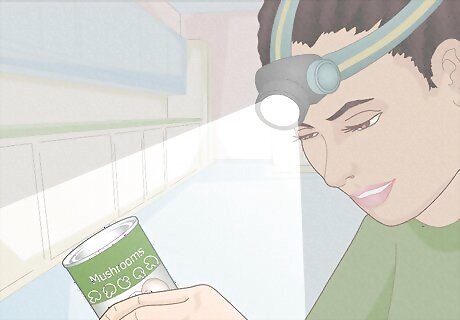
Using a headlamp is a near-perfect solution for power outages. Headlamps will help you illuminate whatever you need to look at, and you’ll free up your hands so you can collect supplies, salvage food, or do whatever else you need to do to hunker down for the blackout. A battery-operated LED lamp is going to give you all of the light that you need. If you’re putting an emergency kit together, this is one of the best investments you can make.
Water bottle lantern
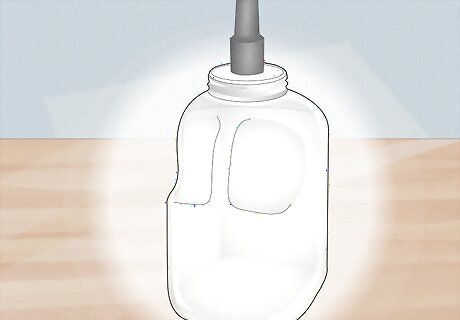
You can turn a small flashlight into a big light source with water. Grab a clear jug—the bigger the better—and fill it up with water. Then, grab a flashlight and set it up so it’s resting directly against the bottle. The light will refract in the water and spread out to illuminate the room. If you need a mobile light source, just hold the bottle and flashlight together and walk around with it. This won’t work as well if the jug isn’t totally transparent. You can do this with a smaller water bottle as well, but the bigger the container is, the stronger the light will be.
Mirrors
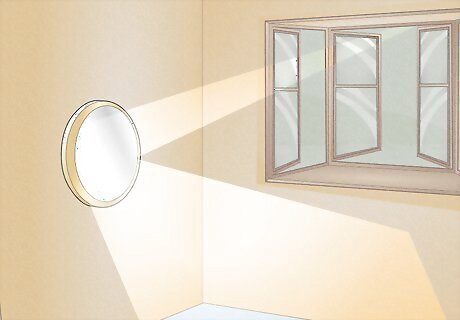
You can use a mirror to amplify any smaller lights you have. If there’s any kind of light coming in from outside, set a mirror up at an angle so the light reflects into your home. If you only have a small reading light, you can clip it to the edge of a mirror to amplify the light. Pointing a flashlight at a mirror is also a great way to spread the light out and illuminate an entire room. This works because mirrors reflect light much better than any other surface or material. Any light source hitting the mirror will be spread out in a wider direction, which can make it much easier to see.















Comments
0 comment